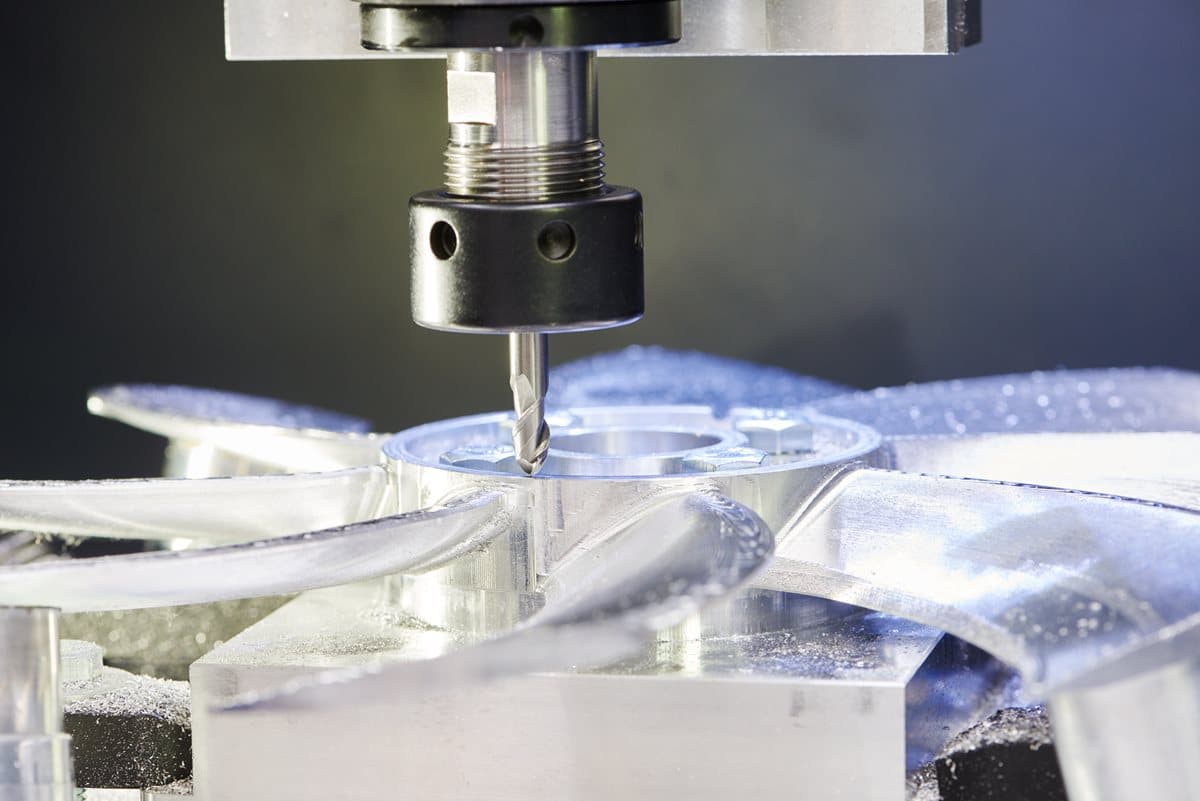Robotic machining has become a viable alternative to using CNC machines in milling applications. Automating processes can lead to substantial savings, especially in large-scale part manufacturers such as those in aerospace and automotive, and custom manufacturers.
There are other benefits besides potential cost savings from automating milling and deburring applications with robotics. Robotic milling can integrate:
- Advanced machine vision
- Force perception
- AI robotic machining
- Machine learning
- Autonomous measurement
- Autonomous execution
Although robotics can replace some CNC machines, the main emphasis in robotic milling application is the rapid reconfigurable technology to meet customized process requirements and uncertain processing tasks.
Despite the benefits, there are still challenges to automating milling applications. Here are some of the challenges, according to Rob House, Co-CEO of OCTOPUZ, Inc.

Programming the Motion
In milling applications, a robot is typically deployed to do 5+ axis milling/deburring. Creating the motion can be quite complex and require advanced software packages, and more training. It takes much more time compared to programming a 3-axis laser cutting table, for example.
Robot controllers are usually not designed to read and execute points quickly, but most software will not bother optimizing the space between points since CNC machines are designed to read a lot of points. This issue can lead to lag and jitter in the robot’s motion if the robot controller isn’t able to read points quickly enough.
Managing Robot Errors
Robotic milling toolpaths can have complex motions and movements. As House points out, this complexity increases the likelihood of running into potential errors, including:
- Singularities
- Joint limits
- Reach limits
- Collisions.
An advanced software package will allow users to check and resolve these errors in a software setting before posting code to the robot and finding out when the robot is in operation.
Managing the Cables
Unless you are working with a very specific application, any form of milling will involve certain cabling going to the spindle head/plasma torch, etc. When creating the motion, you need to ensure that the cables are not pinched or become wrapped around the robot arm mechanisms.
Managing Robotic Imprecision
When moving a robot in Cartesian space, the task space is defined by the position and orientation of the end effector. You must account for potential imprecision. For example, 1-4mm of error is not unusual, although accuracy will depend on many factors. Calibration of the robot’s references, as well as the robot’s backlash in gears, gravity, and inertia compensation, can all make an impact.
When milling or deburring a part that requires specific tolerances, you need to be extra careful during the robot calibration process to minimize orientation changes to ensure you are working within the optimal workspace of the arm.
Robots are not as rigid as CNC machines and cannot machine all of the same materials. While robots are generally a great solution for softer materials such as foam, wood, etc., they are not generally a viable solution for tougher materials like steel that typically require a CNC machine, House said.
Managing the Toolpath Size
Robot controllers generally hold fewer control points than a CNC machine. In most cases, manufacturers provide point-to-point motion repeatability rather than using dynamic tool path contouring for accuracy. Even minor fluctuations in the toolpath can lead to deficiencies.
If very large toolpaths are required, then the robot controller would require:
- Breaking up paths into smaller portions and manually managing files on the controller.
- Sacrificing path quality and filter-out points from Computer-Aided Manufacturing (CAM) software.
- If available, using drip-feeding as an option. This is your best option but is not a standard feature on most robots.
Complex shapes require responsive and flexible machining paths with precise programming.
Pushcorp provides advanced robotic tooling solutions that help overcome these challenges, offering precision and efficiency in automated milling applications.

Overcoming the Challenges of Automating Milling Applications
While some machining applications continue to require the precision afforded by the stiffness of machine tools, advances in robotics are changing that. Already, robots are making significant differences in milling applications and production tasks such as deburring and roughing – tasks that otherwise require manual handling.
When it comes to programming, House said, Offline Robot Programming (OLRP) is changing the way integrators and manufacturers can program, deploy, and reprogram robots.
